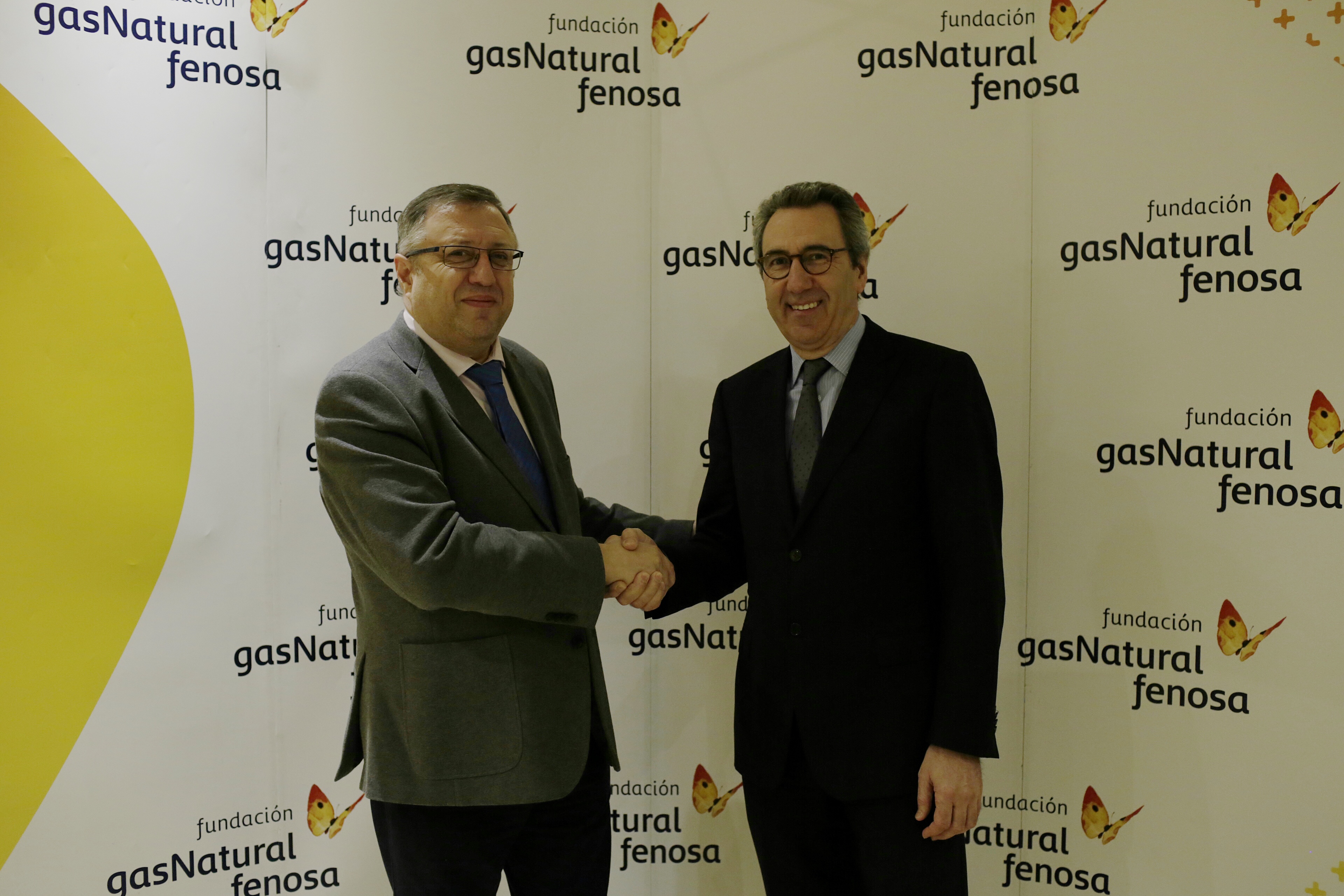The Region of Aragón could potentially replace 44% of its total natural gas consumption with natural gas
Experts highlight the advantages of using biogas to reduce Spain’s energy dependence during a seminar held today in Zaragoza by the Gas Natural Fenosa Foundation and the Government of Aragón.

Aragón is the region with the third greatest potential for production of this fuel, generated by fermenting organic matter.
Today in Zaragoza, the Director General for Energy and Mines of the Government of Aragón, Alfonso Gómez Gámez, and the Director General of the Gas Natural Fenosa Foundation, Martí Solà, opened the seminar Biogas in Aragón: challenges and opportunities. The meeting analysed how using biogas can contribute to improving energy security, reduce energy dependence and help meet the European Union's environmental goals.
The seminar, which was officially concluded by the councillor for Rural Development and Sustainability of the Government of Aragón, Joaquín Olona, explained the processes of obtaining and concentrating biogas, its advantages and disadvantages, and the level of implementation in the market of the different technologies. Attendees also discussed practical examples of the use of biogas in livestock farming, agroindustry and wastewater treatment plants in Aragón.
The seminar, attended by 120 professionals, highlighted the potential of biogas for Spain, and particularly for the region of Aragón. The manager of Biovec Medio Ambiente, Oscar Bartomeu, analysed the situation and the potential production of farming and livestock biogas in Spain. He remarked that according to a study by Probiogas, Spain has enough raw materials to replace 12% of the annual consumption of natural gas with biogas.
Bartomeu emphasised that there is great potential for creating biogas plants in Aragón. The region has the third greatest potential for production of this fuel, generated by fermenting organic matter, and could eventually replace 44% of its natural gas consumption with biogas.
This potential is already being exploited in the Almozara wastewater treatment plant in Zaragoza. The technical director of Ecociudad Zaragoza, José Ignacio Castrillo, presented the experience of this municipal plant treating domestic and industrial wastewater, which treats around 12,000,000 m3 a year. Castrillo described how energy value is extracted from the main waste products of the treatment process.
Biogas Project Manager at GAS NATURAL FENOSA, María Piedad Martínez, presented the various technologies available to produce biomethane from biogas and solid biomass, and their level of implementation in the market. She underlined that Spain is Europe's seventh largest producer of biogas and solid biomass, according to IDAE data.
Ana Belén Juara, from Enagás Gestor Técnico del Sistema, explained that at the end of 2014 there were 17,786 biogas plants in Europe, 39 of them in Spain. Among the success stories in Spain, in terms of integrating biogas in a gas transport network, Juara presented the Valdemingómez plant in Madrid, one of the largest biomethanisation complexes in Europe. She also described the specifications biomethane must meet for injection into the natural gas network, and some relevant figures: for example, a bus carrying 55 passengers could travel 1,000 km based on the waste the passengers produce each year, or a car running on biogas would save 2,600 kilos of greenhouse gas emissions a year compared to a car running on petrol.
The Energy Director of the Hera Group, Miquel Torrente, reviewed the technologies for treating and enriching biogas to produce biomethane, and presented the Hera Group's Góngora Project, with the participation of GAS NATURAL FENOSA and SONDENA, which analyses the viability of using biogas from the Góngora landfill (Navarre) for injection into the natural gas network or as a biofuel for vehicles.
The Director of the Biomass Department at the National Renewable Energy Centre (CENER), Javier Gil Barnó, described the current situation, challenges and costs of producing biomethane from a synthetic gas, i.e., through the gasification of plant and forestry waste.
The Gas Natural Fenosa Foundation
The Gas Natural Fenosa Foundation, founded in 1992, works to promote information and training and raise social awareness of improvements in energy efficiency and technological innovation in the field of energy while respecting and protecting the environment. It promotes cultural activities through its Gas Museum that are aimed at preserving and publicising the sector's historical and cultural heritage. It also has a programme to support exports for small and medium-sized enterprises. Its international activities are carried out in Algeria, Argentina, Brazil, Colombia, Costa Rica, Mexico, Morocco, Italy, Moldova and South Africa.
Zaragoza, 02 March 2016.
Share